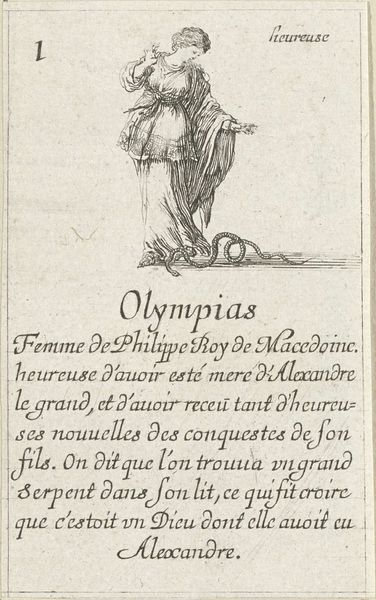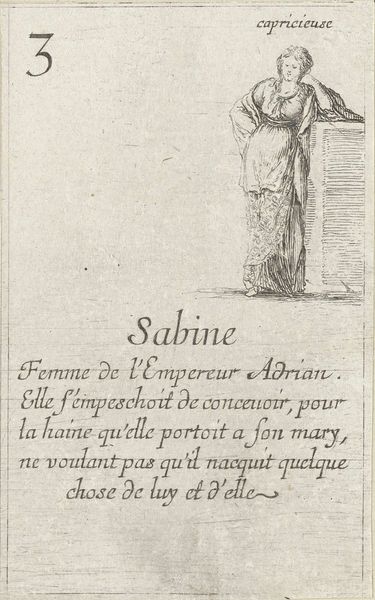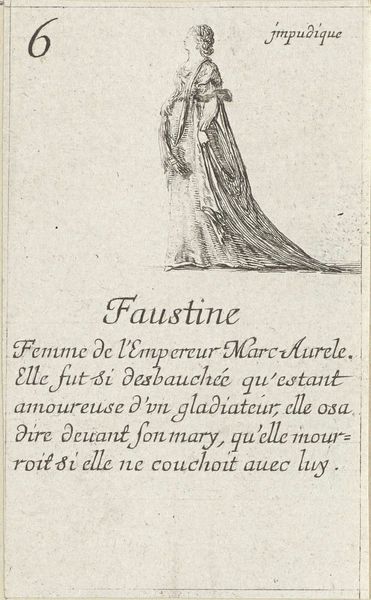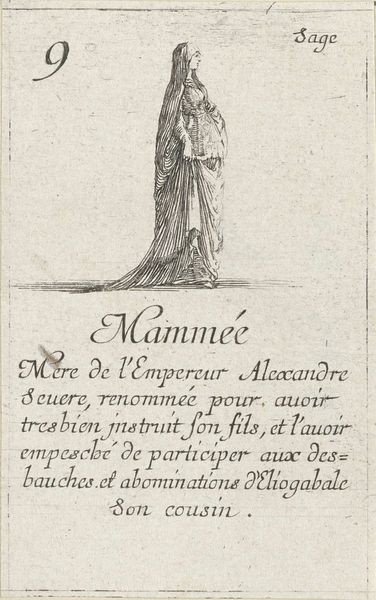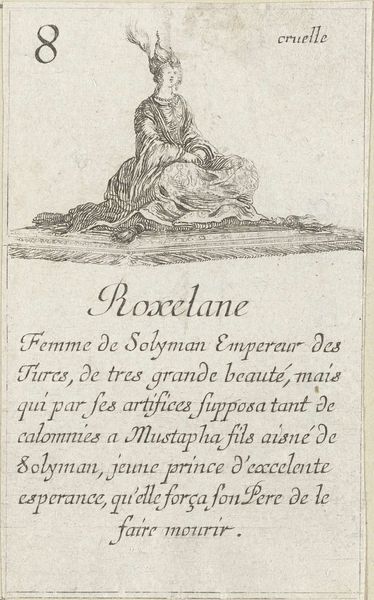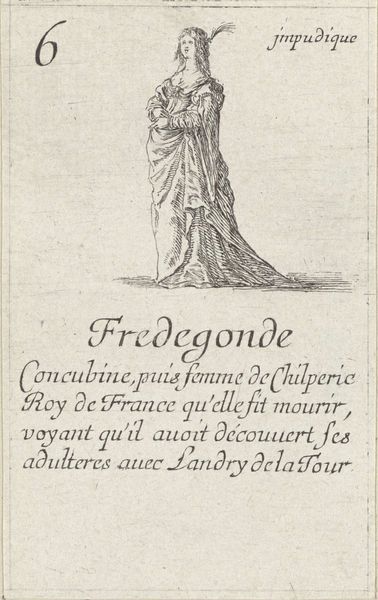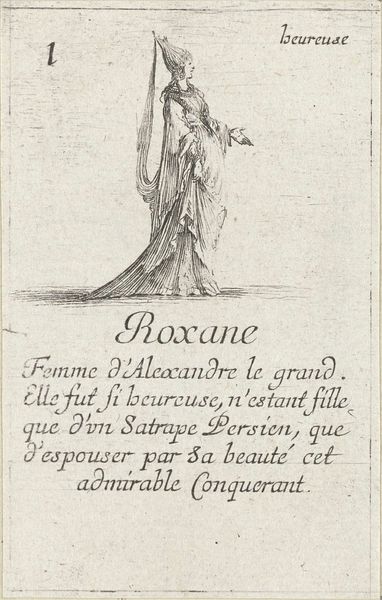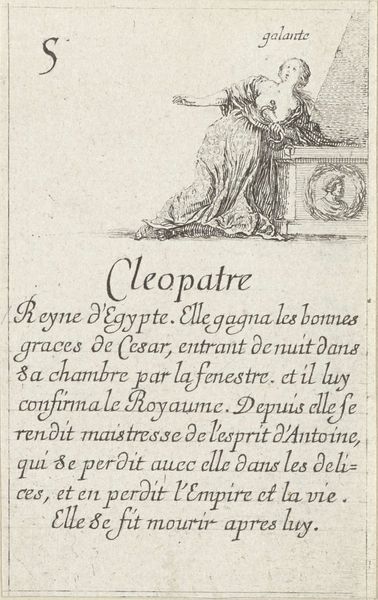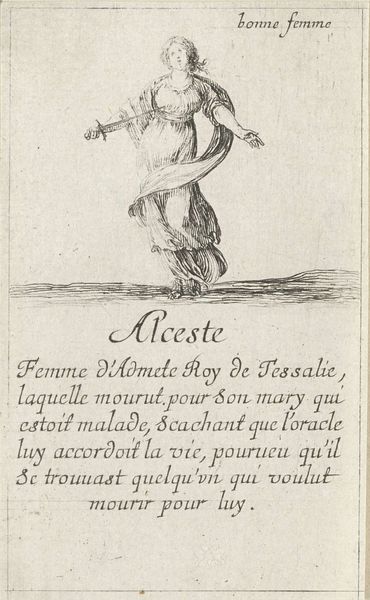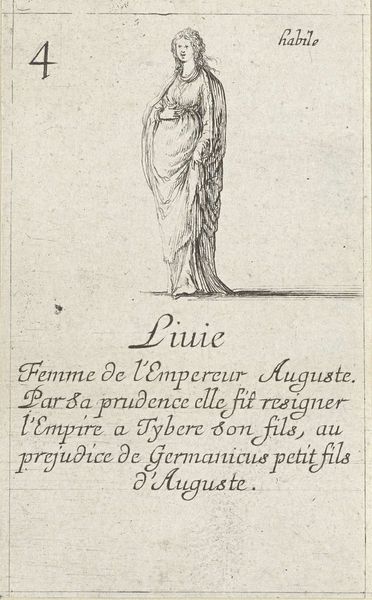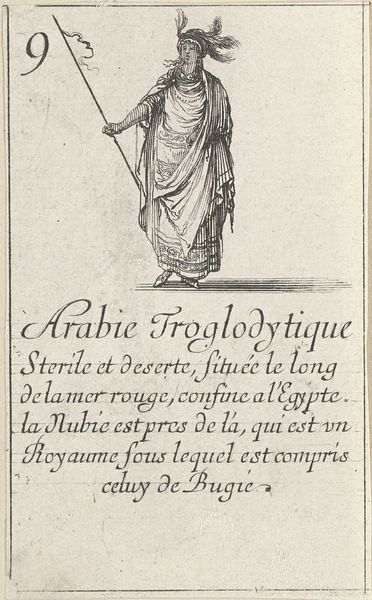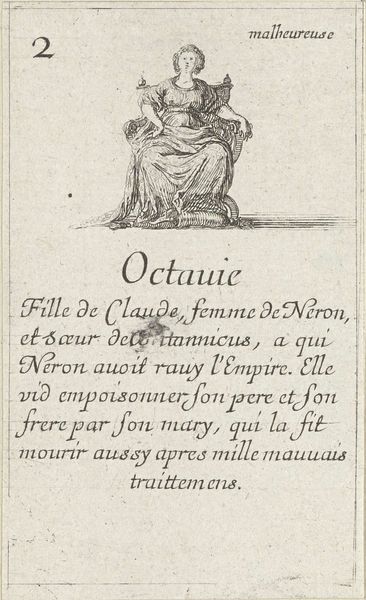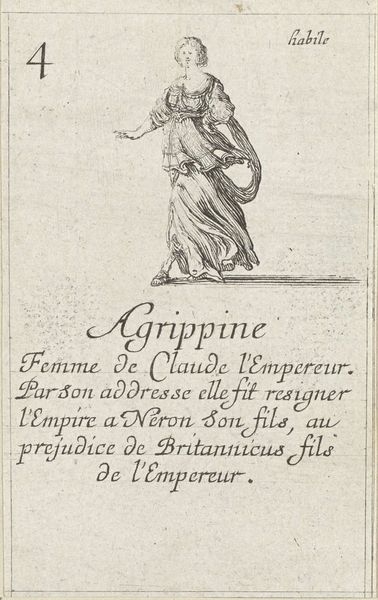
print, engraving
#
portrait
#
baroque
# print
#
history-painting
#
engraving
Dimensions: height 90 mm, width 55 mm
Copyright: Rijks Museum: Open Domain
Editor: Here we have Stefano della Bella's engraving, "Valeria Messalina," likely created between 1620 and 1664. The composition is striking. A woman, presumably Messalina, stands poised with an inscription detailing her scandalous behavior. What does this print reveal about the social commentary of the time? Curator: It's a potent piece of historical commentary, definitely shaped by the socio-political lenses through which Messalina was viewed. Think about it – the print is intended for a public audience, so the artist is tapping into an established narrative. He emphasizes not just her supposed "impudence," as the print suggests, but also the Emperor Claudius' perceived weakness, even stupidity, for being so easily deceived. How do you think that message resonates with its intended viewers? Editor: I see it now! So, it’s less about just illustrating a historical event and more about reinforcing certain power dynamics and moral judgements already present in the culture. The print isn’t necessarily meant to be objective. Curator: Exactly. Consider the role of the printing press itself. Prints made history and moral stories accessible. They created an avenue for circulating very specific and persuasive depictions of power, gender roles, and societal expectations. What strikes you about the *way* Messalina is depicted? Does it align with the textual description, for instance? Editor: It's a fascinating contrast! The text condemns her, labeling her "impudique," yet the image presents her as graceful, even noble. The artist isn’t showing the scandalous actions directly but rather a dignified woman. This difference tells me it's not simply meant to document something. Curator: Precisely! And what do you think that tension adds to the overall impact of the piece? Editor: It complicates the message. It invites viewers to participate in judging her and perhaps reflect on the portrayal of women in positions of power, which makes the reading more engaging. Thanks; this helped to understand the political meaning of a seemingly simple portrait. Curator: My pleasure. By considering the historical context and the way images are deployed, we unlock even richer understanding.
Comments
No comments
Be the first to comment and join the conversation on the ultimate creative platform.
